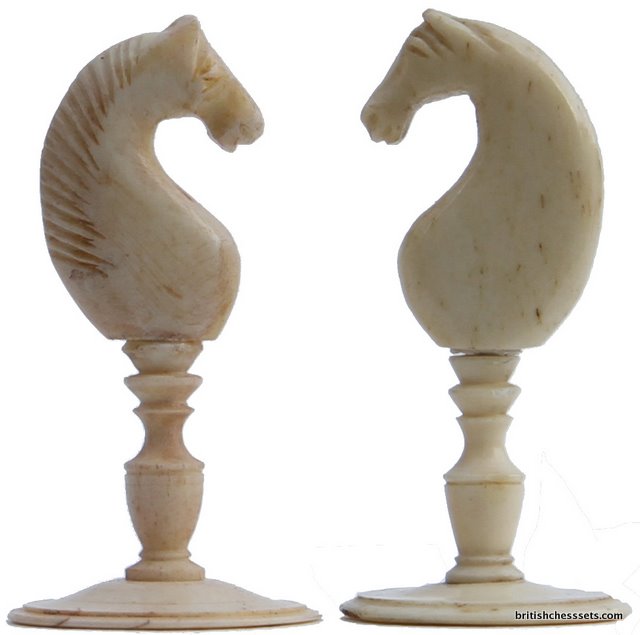18th Century English Sets
Philidor set
Chess did not take off un England until the end of of the 18th century. The earliest English sets usually
found date from the last quarter of the 18th C and are exceptionally rare. They usually have replaced pieces.

Above is an extremely rare 18th Century boxwood and ebony English set, in exceptiona
3.65 inch (93 mm) king, ~1750-70. Note, knight larger than bishop, and K and Q similar, as often found
in this period. The set has the quirks and characteri
toured England in the 1770s with a set like this.

Knights, slightly different sizes, mane on left as usually found with 18th Century sets.
Boxwood oxidised to darkish brown. An authentic set should have this deep patination

18th century carving simpler and less consistent than 19th C.

Bases of knights show the characteri

The bases of the pawns also show the turning.


Pawns have uniform patination
to pieces being original. More uniform turning would be suspicious

Rooks vary in size. The turner worked just by eye.


Note the judder on turning the top of the black rook and the turning marks on the white.
Ivory set
This beuatiful ivory set has very similar characterisrics, with confusing king and queen.

Photo from Joost.
George Washington set
The following ivory set is identical to one owned by George Washington in Mount Vernon in the 1770s.

The simple urn, as used in the stems, was popularise
date to the last quarter of the 18th century. One was found in the wreck of the Halsewell that sank in 1786.

These simple knights were continued into the early 19th Century as they were easy to carve.
"Spikehead"
The bone "spikehead" is from towards the end of the 18th C.


The manes are on the right, which may indicate a slightly later date.